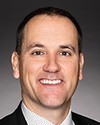Under the PSECA architecture, the equitable compensation assessments themselves happen before collective bargaining, and they are done on a recurring basis. What extra value is there to that, rather than just pinpointing current issues?
To me, anytime you have to revisit something at a certain time, it almost entrenches the process or is a cultural shift, so to speak.
We've heard from witnesses today about some of the challenges when you have just a legislative framework. Oftentimes there are societal overtures that may not provide for that. To me that seems to be the proactive centrepiece of this new model. Could you expand on that?




